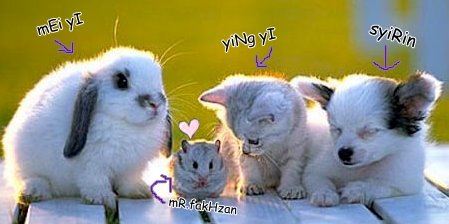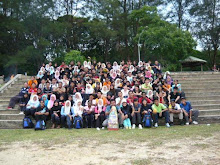- to study the income level and expenditure pattern of the support staff in the public sector
- to determine if the main income of the staff in the local authorities is adequate for them to meet their household needs
 From the table above, we can see that majority of the respondents is staff grade 1-16 (963 people) . Most of them are between age 40 to 49 (500 people) and have already married (1231 people). Malay people is the largest ethnic group among the staff of local authorities in Johor (1455), while Chinese and other ethnic groups only consist of 19 people.
From the table above, we can see that majority of the respondents is staff grade 1-16 (963 people) . Most of them are between age 40 to 49 (500 people) and have already married (1231 people). Malay people is the largest ethnic group among the staff of local authorities in Johor (1455), while Chinese and other ethnic groups only consist of 19 people. For staff grade 1 -16, majority of the male staff earn less than RM1500 (33%), while majority of the female earn between RM3000 and RM3999 (32%). Most of the male staff between grade 17 to 40 either earn between RM2000 and RM2999 (27%) or RM4000 (27%) above while female staff mostly earn RM4000 above (33%). On the other hand, both male (61%) and female (65%) staff worker grade 41 above mostly earn RM4000 above.
For staff grade 1 -16, majority of the male staff earn less than RM1500 (33%), while majority of the female earn between RM3000 and RM3999 (32%). Most of the male staff between grade 17 to 40 either earn between RM2000 and RM2999 (27%) or RM4000 (27%) above while female staff mostly earn RM4000 above (33%). On the other hand, both male (61%) and female (65%) staff worker grade 41 above mostly earn RM4000 above. Based on this graph, we can know that for staff grade 1 - 16, the household items they can own are lesser because they have lesser income. For staff grade 41 above, they own the most household items as they have higher income. The least household item own among all staff is the subscription to Internet while the most common household item own among them are refrigerator and television. One special case is that the staff grade 1 - 16 own more motorcycles compared to other workers above staff grade 17.
Based on this graph, we can know that for staff grade 1 - 16, the household items they can own are lesser because they have lesser income. For staff grade 41 above, they own the most household items as they have higher income. The least household item own among all staff is the subscription to Internet while the most common household item own among them are refrigerator and television. One special case is that the staff grade 1 - 16 own more motorcycles compared to other workers above staff grade 17.
FACTORS:
- the increase of bus tickets (starting from 1st August) and taxi fares, causing the expenditure on food and transportation to rise.
- serious inflation; the monthly income of the staff is not enough to cover the amount they spend on daily needs although their income has been increased.
PREDICTIONS:
Life will be more difficult for the staff in local authorities in Johor because their daily expenditure will continue to increase. Staff grade 1 - 16 will be affected the most as they have lower income. Below are some facts to substantiate our opinion:
- world economy growth is still not stable after the economic crisis earlier in 2009; this will bring negative influence to Malaysia economy and society.
- Oil price fluctuates as the conflict between the Middle East countries and Western countries still continues.
- Electricity bill may increase in the future since the proposal of increasing electricity bills has been brought to Parliament to be debated.
Malaysia government must put in more effort to improve local economy so as to upgrade the welfare of staff workers in public sectors. One of the avenue we suggested is to collaborate with ASEAN countries and OIC members to increase the value of Ringgit Malaysia.













